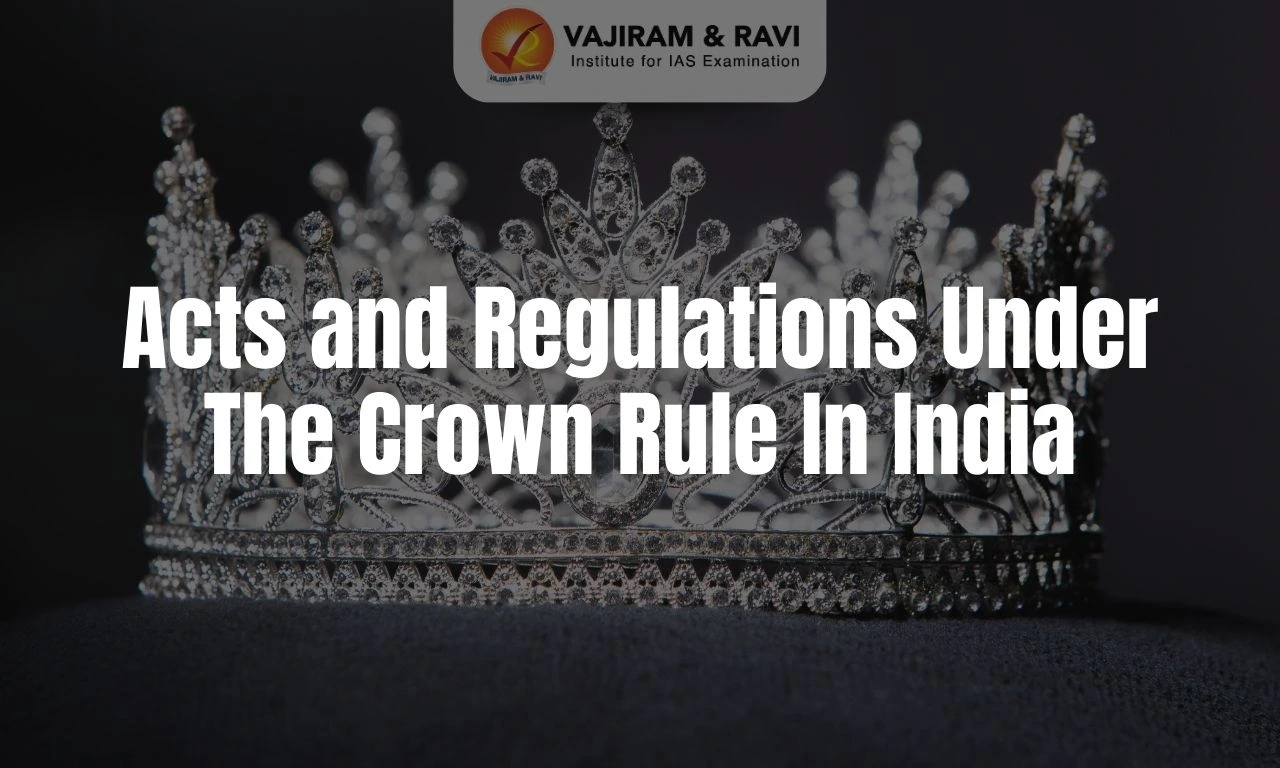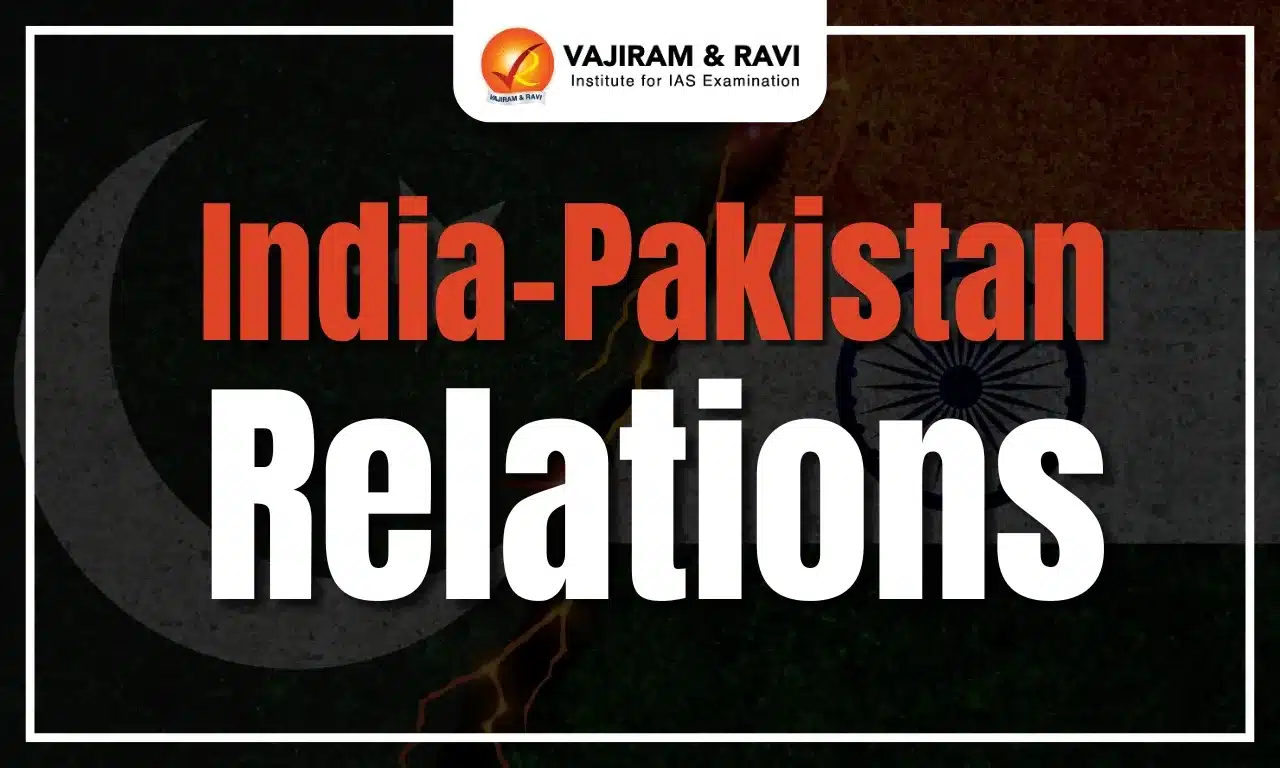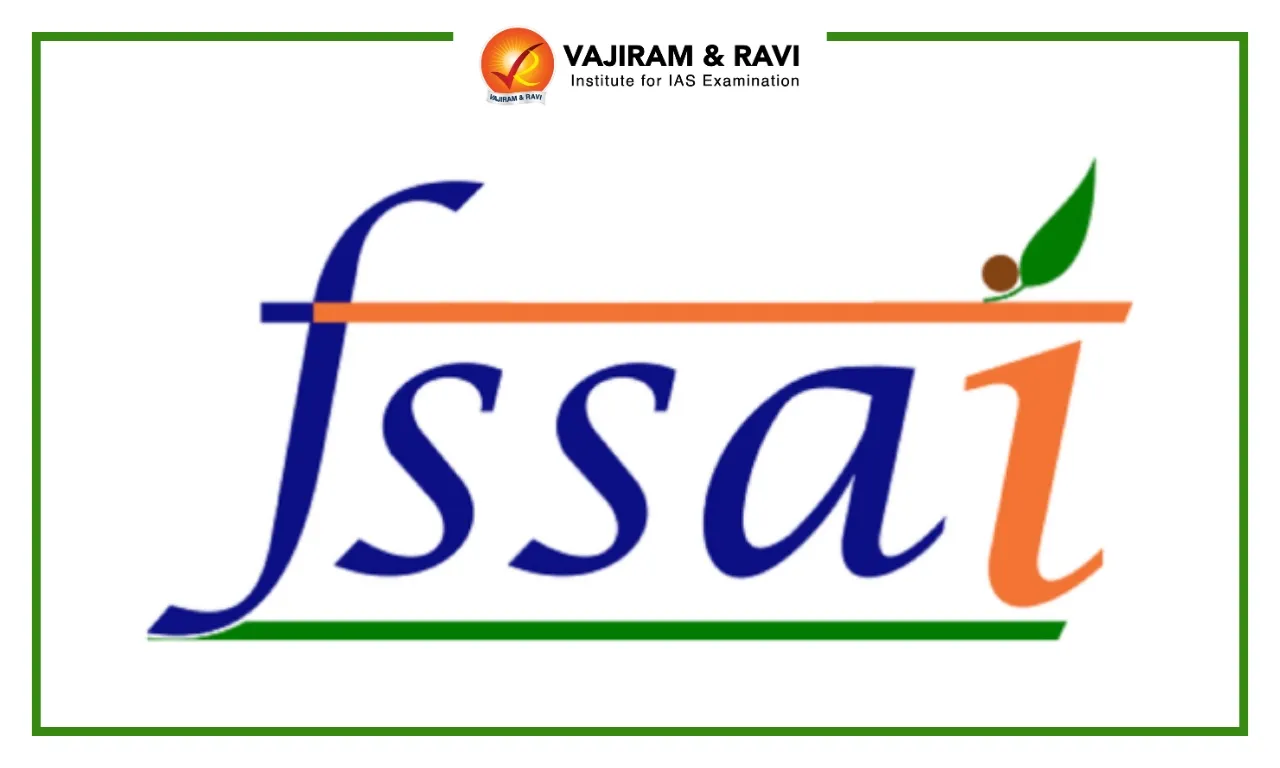Acts and Regulations under the Crown
The British Parliament became increasingly involved in Indian affairs as the Crown assumed control of Indian affairs by the Act of 1858. Between 1858 and 1947, the British Parliament passed 196 Acts pertaining to the continent, frequently reviewing the administration of India. The viceroy and the chosen members of his council served as the head of the Crown’s government, which was entirely composed of British officials.
The executive council served as a cabinet and a member of an imperial legislative council after the Indian Councils Act was passed in 1861. In addition to similar provincial legislative councils made up of appointed officials, each of the eleven provinces in British India had its own governor. A small number of Indian council members who were chosen solely for consultation purposes also belonged to the local elite.
The outbreak of 1857, called by V. D. Savarkar and Dr Pattabhi Sitaramayya the First War of Independence, shocked the British government and its bureaucracy. Economic exploitation, social deprivation, and political unrest made the 1857 outburst inevitable. The British rulers had to revise their policy of conquest and annexations and adopt a cautious and calculated policy of association and cooperation. The acts and regulations under the Crown are:
Government of India Act, 1858
The Revolt of 1857 gave a severe jolt to the British administration in India and made its reorganisation inevitable.
- Administration: The Government of India passed from the hands of the English East India Company to the Crown.
- Viceroy: The Governor-General came to be known as the viceroy.
- Forces: The Military and Naval forces of the company were transferred to the crown.
- Institutions abolished: The Board of Control and the Court of Directors were abolished.
- Their powers were transferred to the Secretary of State for India and his India Council.
- The secretary of state was given the power to superintend, control and direct Indian affairs.
- He was a cabinet minister of England.
- Indian Council: The Act created the Indian Council of fifteen members.
- Seven were to be elected by the court of directors, and the remaining were to be appointed by the Crown.
- The Secretary of State for India was to be the president of the Indian Council.
- He was given a vote and a casting vote in the case of a tie.
- The council met twice a week.
- Control over civil and military servants of the crown was given to the India Council.
- The Secretary of State for India was declared by the Act to be a corporate entity that could be sued in both England and India.
The Indian Councils Act of 1861
The reason for the initiation of this policy was to know what the Indians thought about British rule.
- Imperial Legislative Council: The Act enlarged the Governor-General’s Council for the purpose of making laws.
- In that capacity, it was known as the Imperial Legislative Council.
- Members of Council: The Governor-General was authorised to add to his Executive Council between six and twelve members, of whom at least half had to be non-officials who could be Indian or English.
- The Imperial Legislative Council:
- It possessed no real powers
- It was merely an advisory body
- It could not discuss any important measure, and no financial measures at all, without the previous approval of the Government.
- It had no control over the budget
- It could not discuss the motions of the administration
- It had no control over the executive
- No bill passed by it could become an act till it was approved by the Governor-General.
- Provincial Executive Council: The authority to nominate the Attorney General was granted to the governments of Bombay and Madras.
- Additionally, it was to propose no less than 4 and no more than 8 additional Executive Council members for legislative purposes.
- Additional powers: The Governor-General was given the power to create new provinces for legislative purposes and to appoint Lieutenant Governors for them.
- He was also authorised to divide or alter the limits of any presidency, province or territory.
- Decentralisation: The tide of centralisation began to turn after the Act of 1861.
- It outlined the establishment of legislative councils resembling those in the centre first in Bengal, Bombay, and Madras before moving on to other provinces.
Indian Council Act of 1892
The early nationalists wanted a larger share in the government of their own country and made an appeal to the principle of democracy. Their protests forced the British government to enact the Indian Councils Act of 1892.
- Council members: By this Act, the number of members of the Imperial Legislative Council as well as of the provincial councils, was increased.
- Although some of these representatives might be indirectly chosen by Indians, the official majority remained.
- Budget: The councils were also given the right to discuss the annual budgets though they could not vote on them.
Indian Council Act of 1909 (Morley-Minto Reforms)
It was meant to divide the moderate nationalists
- Elected members: The MorIey-Minto Reforms increased the number of elected members in the Imperial Legislative Council and the provincial councils.
- Indirect election: Most of the elected members were elected indirectly
- by the provincial councils in the case of the Imperial Council and
- by municipal committees and district boards in the case of provincial councils.
- Reserve seats: Some of the elected seats were reserved for landlords and British capitalists in India.
- No power to Council: Moreover, the reformed councils still enjoyed no real power, being merely advisory body.
- Separate electorate: It introduced a separate electorate for Muslims.
- Official majority: The official majorities were abolished from the provincial legislature.
- It was done on the advice of Gokhale, who was deeply involved in the preparation of Reforms.
- Executive control: The reformed legislature did not have control over the executive.
- Powers given to members of Council:
- The right to ask questions and supplementary questions for the purpose of further elucidating any point.
- To move resolutions in the councils.
- Public interest matters: Rules were also framed under the Act for the discussion of matters of general public interest in the legislative councils.
Government of India Act, 1919 (Montagu-Chelmsford Reforms)
The reforms were meant for the increasing association of Indians in every branch of the Indian administration.
- Provincial Council: The Provincial Legislative Councils were enlarged, and the majority of their members were to be elected.
- Dyarchy: The provincial governments were given more powers under the system of Dyarchy. Subjects were classified into two categories.
- Reserved subjects: Subjects, such as finance and law and order, were called reserved subjects
- These remained under the direct control of the Governor.
- Transferred subjects: Subjects such as education, public health, and local self-government were called transferred subjects
- These were to be controlled by ministers responsible to the legislatures.
- Reserved subjects: Subjects, such as finance and law and order, were called reserved subjects
- Extension of the separate electorate: Separate electorate was extended to Sikhs, Indian Christians, Anglo-Indians and Europeans.
- Bicameralism: Introduced at the central level.
- The lower House was called the Legislative Assembly.
- The Upper House was called the Council of States.
- Civil Services: It provided that the ICS exam would be held in India.
- Federal Public Service Commission: The Act had recommended its establishment.
- It was meant to realise the Indianisation of Services.
- Chamber of Princes: Its recommendations resulted in the creation of the Chamber of Princes.
- It was merely an advisory body.
- It had no concern with the internal affairs of individual states, nor could it discuss any other matter.
- Electorate: The electorate was enlarged.
Government of India Act of 1935
The discussions of the third round table conference eventually led to the passing of the Government of India Act of 1935.
- All India Federation: The Act provided for the establishment of an All India Federation.
- The federation was to be based on a union of the provinces of British India and the Princely States.
- Provincial administration: A new system of government for the provinces on the basis of provincial autonomy was introduced.
- Dyarchy: Dyarchy was replaced from provinces to the central level.
- Now Viceroy would control important subjects like defence and foreign affairs.
- Financial control: The Act transferred the financial control from the Secretary of State to the Government of India headed by the Viceroy.
- Public Service Commissions:
- Federal Public Service Commission for the services in the centre.
- Provincial Public Service Commission for the services in the Provinces.
- Joint Public Service Commission for the joint services in two or more provinces.
- Reserve Bank of India (RBI): The Act provided for the establishment of an RBI to control the currency and credit of the country.
- Federal Court: The Act established the Federal Court to interpret the provisions of the Act and also to deal with inter-province conflicts.
- Council of India: The Act abolished the Council of India established by the Act of 1858.
- Electorate: The electorate was enlarged from 6.5 million to 30 million.
- Reservation of seats: In the central legislature, 30-40 percent of seats would be filled by the nominees of the rulers.
- It was done to deprive the Congress to enjoy the majority.
- Burma: Act separated Burma from India.
Indian Independence Act of 1947
The Act was based on the Mountbatten Plan.
- Dominions: It provided for two independent dominions, India and Pakistan.
- Radcliffe Committee: For demarcating the boundaries, Boundary Commission was formed with Sir Cyril Radcliffe as the Chairman.
- Loss of powers:
- The Crown was no longer the source of authority.
- The Governor General and Provincial Governors lost extraordinary powers to legislate.
- The office of the Secretary of State was abolished.
Source of power: Until the new Constitution was framed, the Act of 1935 would govern the Centre and the Provinces with necessary modifications.
Last updated on April, 2025
→ UPSC Notification 2025 was released on 22nd January 2025.
→ The UPSC Vacancy 2025 were released 1129, out of which 979 were for UPSC CSE and remaining 150 are for UPSC IFoS.
→ UPSC Admit Card 2025 is expected to release in first week of May for CSE Prelims Exam 2025.
→ The UPSC Prelims 2025 is scheduled to be conducted on 25th May 2025 and UPSC Mains 2025 will be conducted on 22nd August 2025.
→ Apply once through it and aspirants can apply for various government exams conducted by UPSC.
→ The UPSC Selection Process is of 3 stages-Prelims, Mains and Interview.
→ UPSC Result 2024 is released with latest UPSC Marksheet 2024. Check Now!
→ UPSC Toppers List 2024 is released now. Shakti Dubey is UPSC AIR 1 2024 Topper.
→ Also check Best IAS Coaching in Delhi
Acts and Regulations under the Crown Rule In India FAQs
Q1. What is centralisation in administration?+
Q2. What is the electorate?+
Q3. What is the Budget?+
Q4. What was the time period of crown rule?+
Q5. Why did the crown take over the company?Q) Why did the crown take over the company?+
Tags: acts and regulations under the crown rule In india quest
















